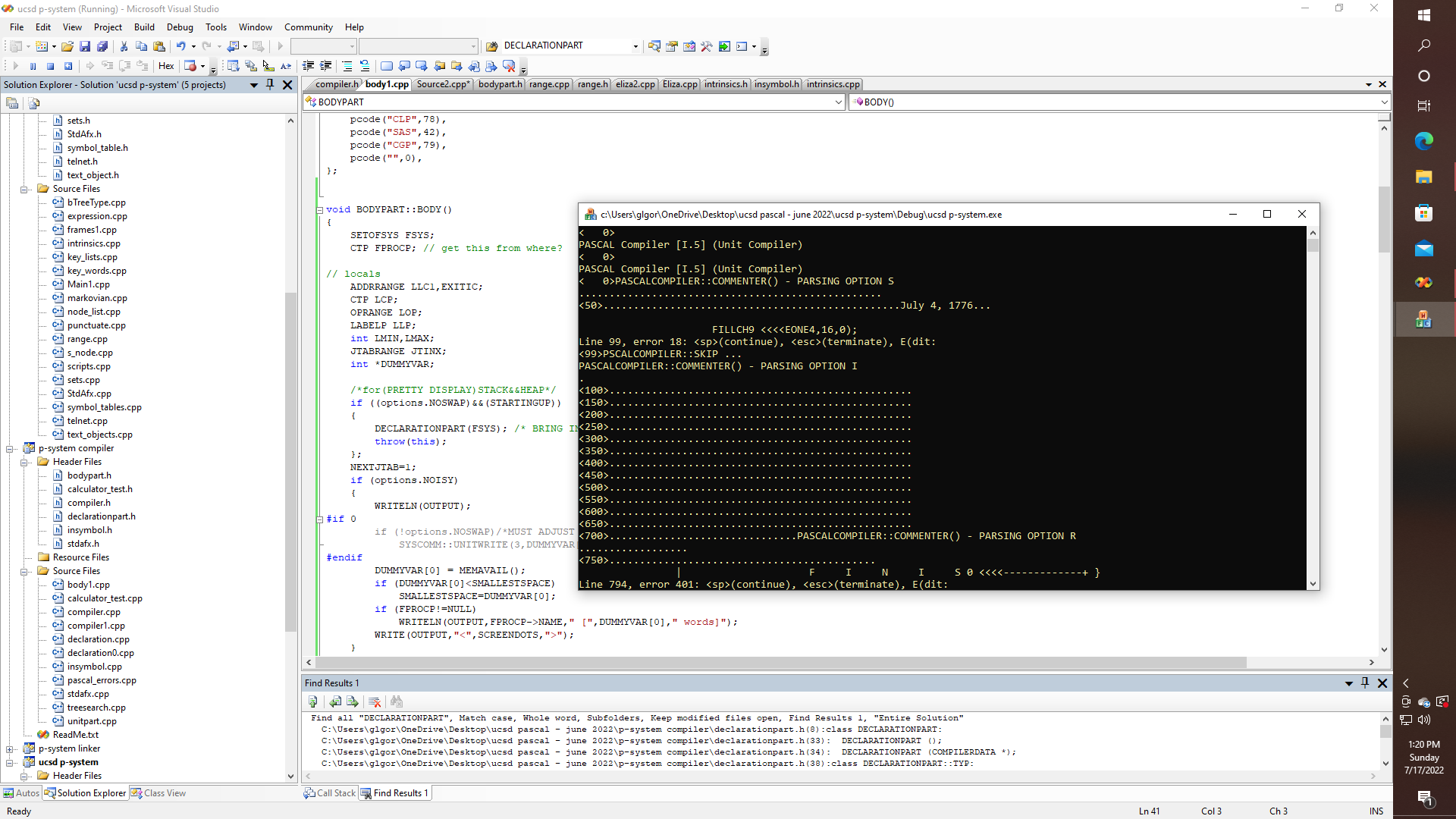I've managed to get all of the functions from the compiler part, unit part, and declaration part to the point of compiling and linking; with still a lot of work remaining on the body part, which is still another 2000 lines, which mainly need WITH statements fixed up, as well as figuring out exactly how I am going to deal with the fact that PASCAL allows nested procedures, but C/C++, of course, does not. Do I pass a pointer to any variables that I need to share from the nesting to the nested functions, - or is there a more elegant way that will work out better in the end; like if there is a sneaky way to use C++ nested classes (!) - which might work out really nicely if I could figure out how to use "placement new" to construct an instance of a virtual derived class which might somehow encapsulate an instance of an existing base object. Now THAT would be nice.

This method seems to work fairly straightforwardly. Just derive DECLARATIONPART from PASCALCOMPILER and use a constructor that copies all of the member variables from the nesting class to the nested class, which is only about 2800 or so bytes, since a lot of stuff is in linked lists or tree structures, and we really only need to borrow a copy of the master pointers.
DECLARATIONPART::DECLARATIONPART(COMPILERDATA *ptr)
{
size_t sz = sizeof(COMPILERDATA);
COMPILERDATA *ptr2;
ptr2 = (COMPILERDATA*)this;
memcpy(ptr2,ptr,sz);
}Now for something REALLY weird! Why not just construct an object and then call a member function of that class by dereferencing the constructor, that is, without ever giving the object a name. Apparently anonymous objects are allowed, but it would be nice if they looked a little prettier.
if (!(options.INMODULE&&(SY==ENDSY)))
{
CERROR(6);
SKIP(FSYS);
DECLARATIONPART(this).MAIN(FSYS);
}Or maybe use placement new to construct the derived class on top of the existing object hierarchy, overwriting the stack in the process, but perhaps figuring out a way to make the stack "look" exactly what it would look like, that is if C/C++ allowed nested procedures. There is also the "alloca" method of reserving space on the stack, then perhaps manipulating object trees over that - which brings me back to placement new. Yet for now - the method of copying the whole base object seems to work well enough to get me into debugging the declaration part - and hopefully sooner than never, I will actually be generating some code files that can actually be run.
 glgorman
glgorman
Discussions
Become a Hackaday.io Member
Create an account to leave a comment. Already have an account? Log In.